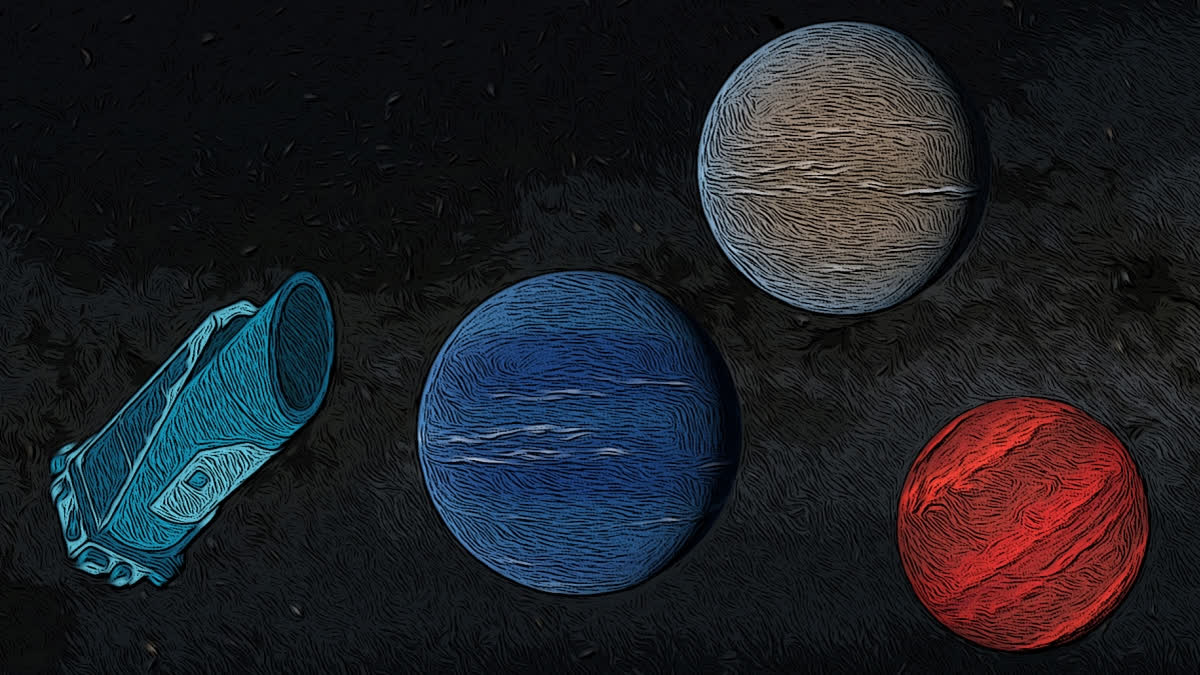New Delhi: A team of astrophysicists and citizen scientists have identified a trio of exoplanets, which may have been some of the last planets that NASA's retired Kepler space telescope observed over its nearly decade-long mission. These exoplanets are all between the size of Earth and Neptune and closely orbit their stars.
"They're exciting because Kepler observed them during its last few days of operations. It showcases just how good Kepler was at planet hunting, even at the end of its life," said Elyse Incha, a senior at the University of Wisconsin-Madison, US. The study about the trio, led by Incha, is published in the journal Monthly Notices of the Royal Astronomical Society.
Working with Visual Survey Group, a collaboration between citizen scientists and professional astronomers working on data from several space missions (Kepler, K2 and TESS), Incha and her team scanned the data obtained from Kepler right from its launch in March 2009 up to its retirement in October 2018 for exoplanets.
K2 was Kepler's renewed mission following its fixing when Kepler ran into mechanical issues in 2014. It then resumed its operations, switching its field of view roughly every three months, a period called a campaign. K2's final campaign was 'number 19', which lasted only for a month. At the end of this, astronomers only had about seven days of high-quality data from 'Campaign 19'.
Also read: China successfully launches new manned spaceship with first civilian on board
Here, in this study, the citizen scientists hunted for signals of transiting worlds, or planets crossing in front of their stars, over all Campaign 19's light curves, which recorded how monitored stars brightened or dimmed. "People doing visual surveys - looking over the data by eye - can spot novel patterns in the light curves and find single objects that are hard for automated searches to detect. And even we can't catch them all," said Tom Jacobs, a former US Navy officer and Visual Survey Group team member.
"I have visually surveyed the complete K2 observations three times, and there are still discoveries waiting to be found," said Jacobs. Jacobs and others found one transit for each of the three planet candidates, each orbiting a different star, in the high-quality dataset. After their initial discovery, Incha and her team also went back and looked at the lower-quality data from the rest of Campaign 19 and found one additional transit each from two of the three stars flagged in the visual search.
"The second transits for those two planet candidates helped us confirm their discovery," said Andrew Vanderburg, an assistant professor of physics at the Massachusetts Institute of Technology (MIT), US. "No one had found planets in this dataset before, but our collaboration was able to find three. And we're really pushing up against the last few days, the last few minutes, of observations Kepler collected," said Vanderburg.
Using the transit information, Incha and her team calculated the worlds' potential sizes and orbital periods. The smallest planet, K2-416 b, was found to be about 2.6 times Earth's size, orbiting its red dwarf star about every 13 days. K2-417 b, just over three times Earth's size, also orbits a red dwarf star but every 6.5 days. The final, unconfirmed planet, EPIC 246251988 b, is almost four times Earth's size and orbits its Sun-like star in around 10 days. (PTI)



